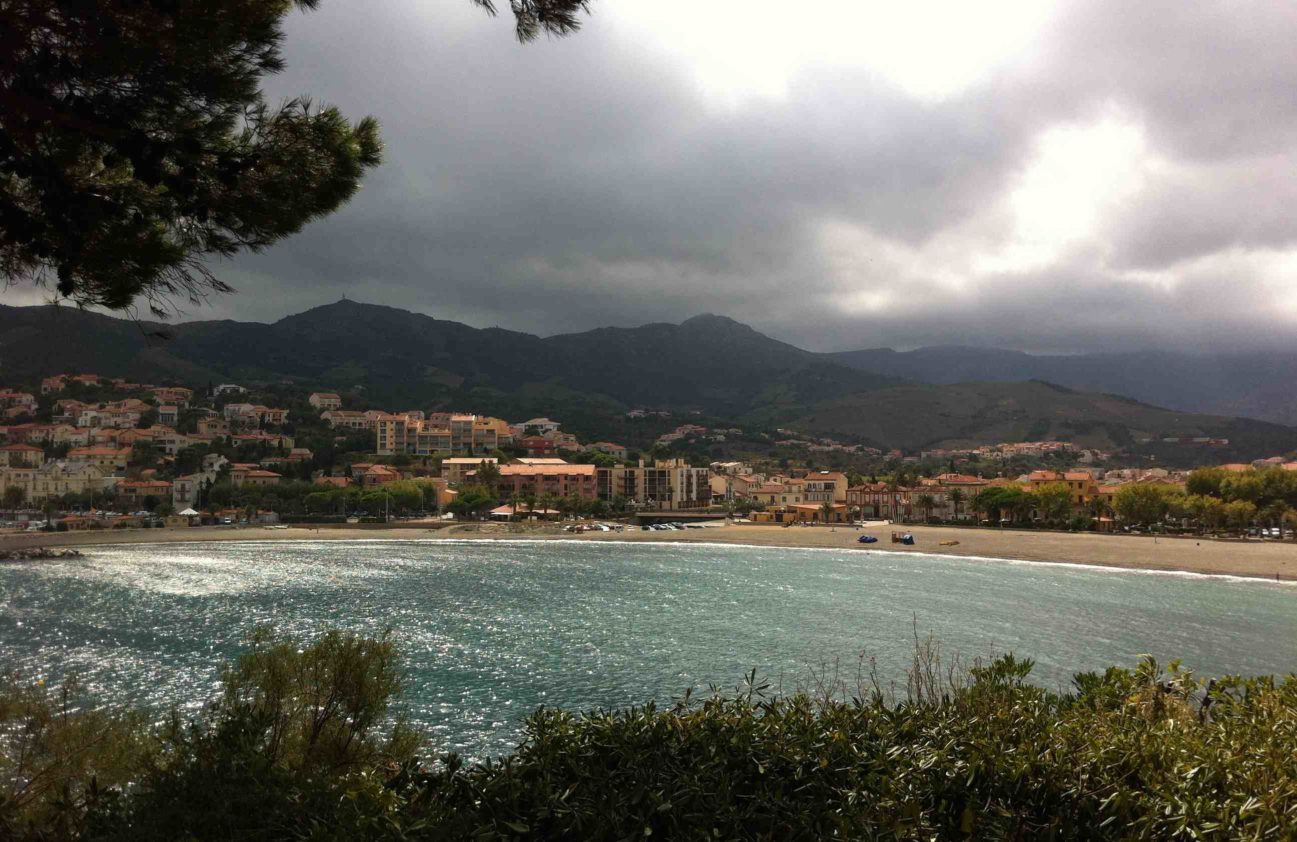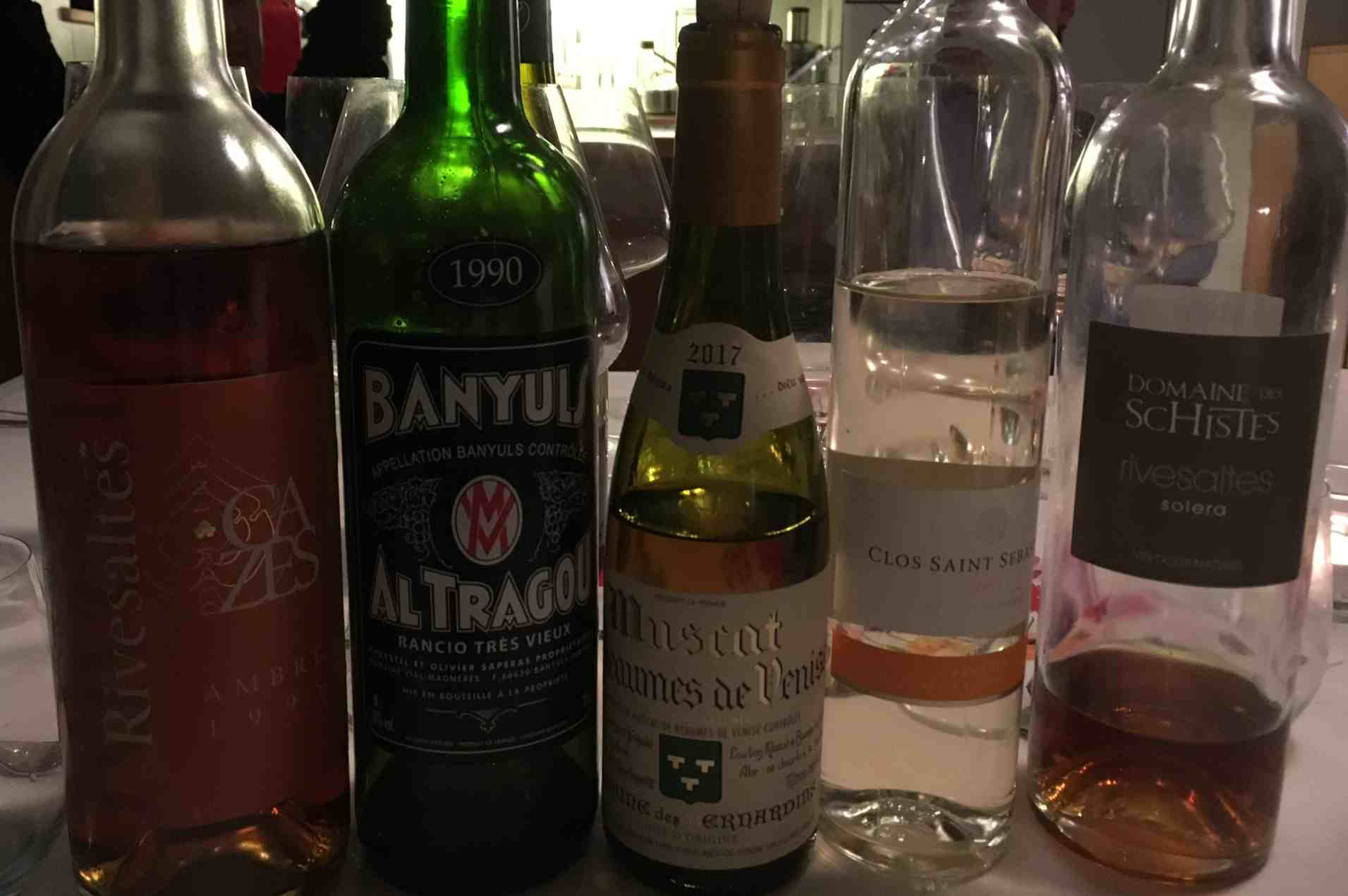
Hans had invited to a wine tasting and announced to offer only one or two small courses – however, there were much more courses. Hans just returned from a journey through Roussillon and the Rhone Valley, where he had bought a variety of Vin Doux Naturel. For the dessert, a chocolate cake with honey olive jelly, he opened some of them.
The Banyuls blanc of the winery Clos Saint Sebastian is produced of 60% Grenache Blanc, 30 % Grenache Gris and 10% Muscat d’Alexandrie. For this, must is fermented cool and after adding alcohol stored for six months on the lees in steel tanks.
Banyuls blanc 2017, Clos Saint Sebastian
Very soft and light in the nose, slightly fruity, delicately spicy, good sweetness, a light, simple, good wine.
The vines (75% Muscat à petits grains blancs, 25%, Muscat à petits grain noirs) which deliver the grapes for the Muscat de Beaumes de Venise Blanc of Domaine de Bernardins thrive on barren, sandy and dry soils, characterized by limestone and sandy molasse, located on the southeast orientated hills of the Dentelles de Montmirail in Beaumes de Venise in the southern part of the Rhone Valley. At the Domaine de Bernardins not only the harvest but also the work in the vineyard is done predominantly by hand. After pressing, the must is fermented without peels and without adding any yeast, and after the fortification with alcohol matured for six months in stainless steel .
Muscat de Beaumes de Venise Blanc 2017, Domaine de Bernardins
Spicy nose, some pineapple, orange fruit, slight breadth, well integrated sweetness, a hint of bitter almonds, very spicy on the finish, very good wine.

Rivesaltes ambré Solera, Domaine de Schistes
Complex, spicy fragrance, gingerbread, walnut, honey, dates, some tobacco. Very complex wine with very well integrated sweetness and a very long finish. Excellent.
Located in Estagel, in the valley of the Agly between Maury and Tautavel, the Domaine de Schistes cultivates vineyards on the predominant brown slate soils called Tautavel. The tasted wine comes from at least forty years old Grenache Gris vines and also contains some Macabeu. The ageing of the wine is oxidative first in cement tanks and then in old barrels. The maturation of the wine is done in the Solera system, which means the respective filling always is an assemblage of different vintages, whereby the Solera per bottling maximally 30% of its volume is taken.
To 100% from Grenache Blanc is the Rivesaltes ambré of the Domaine Cazes, a vintage wine from 1995. The near Rivesaltes situated Domaine farms 220 hectares with biodynamic viticulture. The Grenache Blanc vines for the tasted wine come from clay-limestone with parts of slate and pebbles, and are on average 50 years old.
Rivesaltes ambré 1995, Domaine Cazes
Fruity on the nose, apricot, nutty. Orange palate, orange, almond, some walnut and caramel on the palate, subtly sweet, beautiful long finish. Very good wine.
On terraces of brown slate in the hinterland of Banyuls grow the vines that supplies the Grenache Noir grapes for the Banyuls Rancio Al Tragou. About 20 hl / ha yields the manual grape harvest of the average of 70 years old vines is. The fermentation of the must, including the grape skins, is interrupted after a few days by the addition of high percentage alcohol and the wine remains on the grape skins for another three weeks.
Banyuls Rancio 1990 Al Tragou, Domaine Vial Magnères
Nice nutty rancio and red fruit on the nose, fermented strawberries, tobacco, cocoa, very tender peat and a hint of anchovy on the palate, highly complex wine with extremely long and very nice finish. Outstanding!